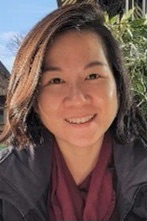Left Brain, Right Brain
Meet the winners of the 2021 Asia Board Game Design Contest
March 2022Photo: Shutterstock.com/Standret
2021 Young Actuaries in Asia Board Game Design Contest
The Asia Board Game Design Contest motivated young actuaries to be more creative with their analytical thinking skills. Watch the video presentations by the winners:
- Stairway to Success (Insurance Edition) by Steven Alfiandy, ASA, and Maria Milenia
- InsureQuest by Kah Jun Lim, ASA, CERA, and Carven Leong
- ALM Matters by Ming Mei Ma, ASA
In response to interest from young actuaries to join contests and earn awards that demonstrate actuarial skill sets, the Society of Actuaries (SOA) organized an Asia Board Game Design Contest in 2021. The contestants were asked to design a board game within a business context that uses actuarial knowledge and skill sets in an engaging and easy-to-understand format. The contest attracted submissions from Hong Kong, Malaysia, Thailand, Singapore and Indonesia.
Congratulations to our 2021 contest winners!
- First place: Stairway to Success (Insurance Edition) by Steven Alfiandy, ASA, and Maria Milenia
- Second place: InsureQuest by Kah Jun Lim, ASA, CERA, and Carven Leong
- Third place: ALM Matters by Ming Mei Ma, ASA
Interview with the creators of Stairway to Success (Insurance Edition): Steven Alfiandy, ASA, and Maria Milenia


Provide a high-level overview of your game.
This game is designed to simulate a career path in the insurance industry. Players are randomly assigned an occupation and receive a bucket card that represents an event. Just like in real career advancement, each player is able to collect dollars through work, make connections through social interactions and develop skills through training. A winner is determined after 12 rounds of external environmental factors (which may include bad news) affect all the players. The winner is the player with the highest occupation class and highest bucket score.
Why did you join the contest?
Both of us thought it would be interesting if we could combine our creativity and actuarial skills into a game. We want to show that actuaries can be fun and innovative. As we start our careers in the insurance industry, we want to give those playing this game a sense of what it’s like to begin the working journey.
How did you find time for discussion and development of your game on top of work, family and me-time?
Honestly, this was the most challenging part for us. During the submission period, we had several deadlines to meet for work. Steven also needed to study for an SOA exam, which is just around the corner. In addition, we are living in different cities, so all work was produced remotely. We pulled all-nighters and spent most of our weekends at home developing this game.
Communication is the key to working as a team. At the beginning, we defined what needed to be done and who would be in charge of each part. We did not feel that joining this contest was an additional burden, as we really enjoyed ourselves while developing this game!
Did you discuss or test your game with other actuaries or non-actuaries?
Yes, we created an online prototype to play with our friends, both actuaries and non-actuaries. We obtained feedback from them on any loopholes or improvements before finalizing the technical details.
What inspired your game design? Is it related to any of your favorite board games?
During the early stages, we separately went to board game cafes and played many games to get a sense of what makes a board game fun. We did a lot of research before finally coming up with this idea. In terms of the game design, Steven was mostly in charge of it. He has a side talent in graphic design, and all our characters and cards were designed by him.
Interview with the creators of InsureQuest: Kah Jun Lim, FSA, CERA, and Carven Leong


Provide a high-level overview of your game.
InsureQuest simulates insurance operations in a simplified form and allows players to hold multiple key roles in an insurance company. Players need to maintain their company’s reputation while making decisions on lines of business to be underwritten, assets to be invested and departments to be managed—while simultaneously taking into account economic and solvency positions as well as different risks arising from company and market events. Players compete to become the insurance company with the most equity without turning insolvent. Our game aims to provide players with a high-level understanding of insurance company operations, risk exposure and capital management.
Why did you join the contest?
Since the outbreak of the COVID-19 pandemic, Malaysia has remained in a prolonged period of lockdown, and we continue to work from home. We viewed this contest as an opportunity to work together on something different.
How did you find time for discussion and development of your game on top of work, family and me-time?
We met virtually a few times per week after work to discuss and brainstorm ideas. It took us about three weeks to develop a prototype using React JavaScript, and that saved us some time—we were able to adopt a more agile approach where ideas could be tested and modifications could be made without committing to a particular design early on. Despite living in the same city, it was easier to collaborate and follow pandemic safety precautions without physically meeting to build the game.
Did you discuss or test your game with other actuaries or non-actuaries?
We discussed the game with our manager, who provided us with a lot of insight and feedback to make the game more engaging. Other friends and colleagues found it interesting that we reimagined “work” into a board game!
Is it important to you that your game be played by the general public—those without insurance or actuarial knowledge?
We want our game to be accessible to as many as possible, which was one of our considerations when we decided to make our game virtual. Since insurance and actuarial fields are a niche community, we avoided using jargon. We also tried to find a good balance of simple and realistic technical calculations, so that non-actuary players can have fun while learning how an insurance company operates.
Interview with the creator of ALM Matters: Ming Mei Ma, ASA

Provide a high-level overview of your game.
My board game is a mini asset and liability management (ALM) simulation. In an environment with random risks, players determine asset allocation strategies according to their liability portfolios. They can decide to invest assets in bonds, which give fixed income, or in equity, which gives variable returns. After a maximum of 10 rounds, a winner is determined based on total assets after paying off liability.
Why did you join the contest?
I used to play board games with friends, but I had never thought of this idea before—combining board game design with actuarial concepts. It sounded interesting when I first saw the email from the SOA calling for contestants. It was a challenge, but it was also a good opportunity to share actuarial concepts in simple or interesting ways with non-actuaries and those interested in the actuarial world. It would be great if more people could understand our profession.
How did you find time for discussion and development of your game on top of work, family and me-time?
It took me a long time to develop my game. It’s not only about thinking of an idea; it’s also making a board game prototype and shooting a video to introduce it. I learned a lot of new skills. The submission period is short, so I needed to plan each step carefully. For example, I used weekends to design the cards and send them to a printer—and the turnaround time is approximately one week—so I continued testing over the next weekend. Of course, I had to sacrifice some family time and me-time for this design, but I knew that it would be for just a short period of time.
Did you discuss or test your game with other actuaries or non-actuaries?
I mainly discussed the idea and tested the game with other actuaries. They gave me a lot of valuable feedback on the design. I also talked briefly with some of my non-actuary friends to check if the game would be too complicated for them. That was also important during the development process.
It sounds like you have been involved in ALM during your career. What are the benefits and challenges of performing ALM?
ALM is an important piece in capital management. It’s quite interesting to look at business through both asset and liability perspectives. But it is challenging since we focused on asset and liability calculations separately when we studied in school, and now we are paying attention to their interaction as well.
Statements of fact and opinions expressed herein are those of the individual authors and are not necessarily those of the Society of Actuaries or the respective authors’ employers.
Copyright © 2022 by the Society of Actuaries, Chicago, Illinois.

